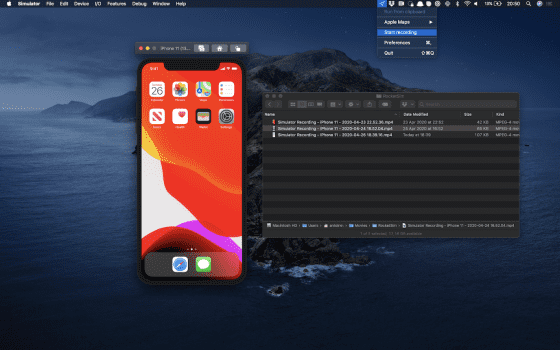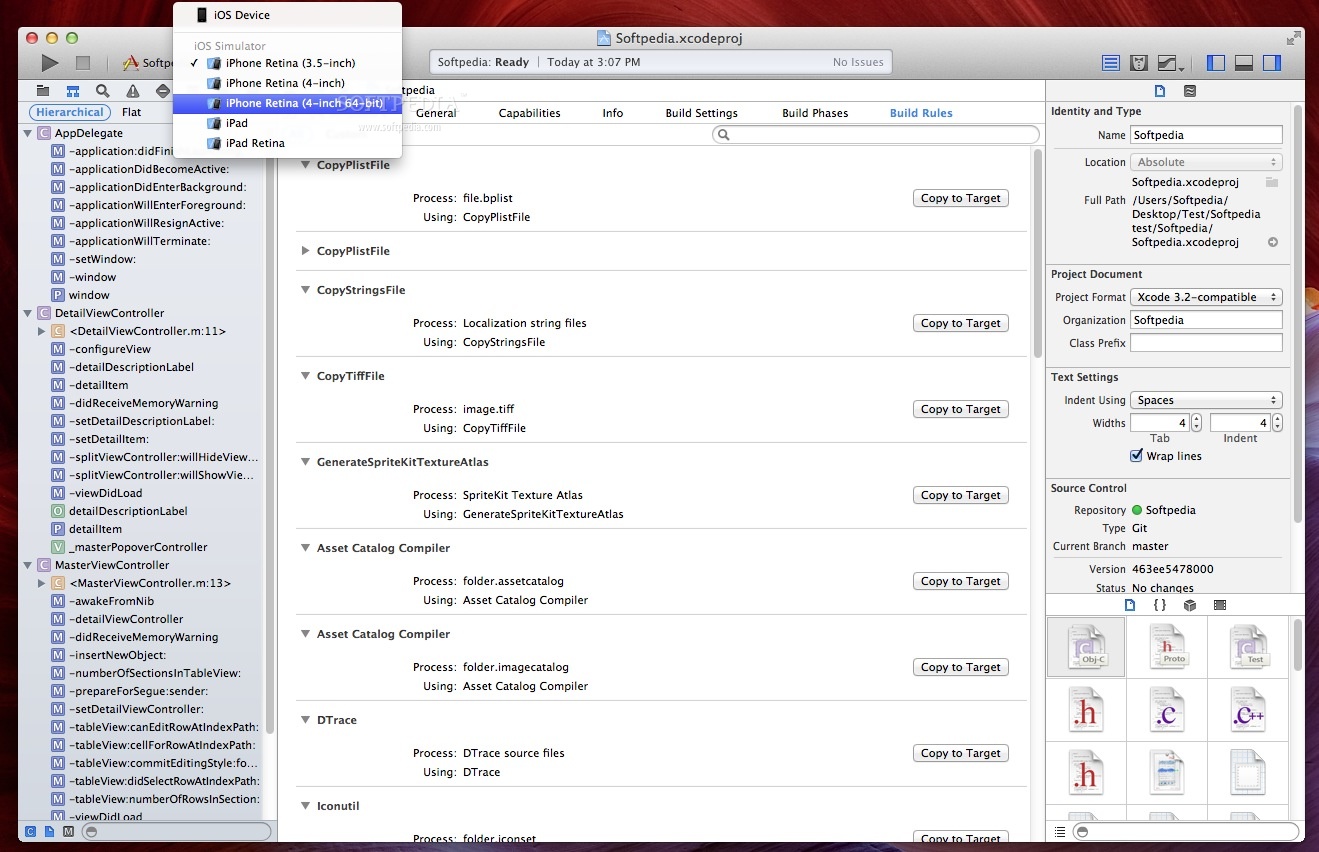The latest version of Xcode that MacOS Mojave can install is 11.3.1
Later versions of Xcode no longer support MacOS Mojave
Apple Xcode 11.6 Stable for macOS 10.15.2 and later July 23, 2020 No Comments software, programing tools Xcode is a tool for coding and building applications for Apple products and devices. I'm using VMware to run macOS Catalina 10.15 beta I tried to download xcode from the appstore and it won't After that I downloaded the XCode 11.7 from the developer download, and installed it but won't work So I will download another XCode version, but Which XCode version is compatible with macOS Catalina 10.15 beta? Xcode 10 supports running multiple concurrent versions of the Xcode app and of any associated tools such as Simulator. Xcode 10 can coexist with previous versions of Xcode. Installation guide file password link. The file extension is xip. Download link Xcode 12.0.1 Stable for macOS 10.15.4 or higher. Download Part 1 – 2 GB. Download Part 2. Xcode 11.3 supports developing apps for iOS 13.3, iPadOS 13.3, tvOS 13.3, watchOS 6.1, and macOS Catalina 10.15.2. Xcode 11.3 supports on-device debugging for iOS 8 and later, tvOS 9 and later, and watchOS 2 and later. Xcode 11.3 requires a Mac running macOS Mojave 10.14.4 or later. – Marv Apr 17 '20 at 1:37. The current Mac App Store version of Xcode (11.4) requires Catalina 10.15.2. You will need Xcode 8.2.1 for OS X El Capitan 10.11.6.
Xcode official download address, you need to log in to Apple account. After downloading, double-click to unzip the XIP file, and then drag the extracted file to the application. If you want to keep the old version, you need to rename the original version before dragging
Here are the sources and basis of the information
Check the release notes information of Xcode on the official website
- Xcode 11.3.1 Release Notes
Xcode 11.3.1 supports developing apps for iOS 13.3, iPadOS 13.3, tvOS 13.3, watchOS 6.1, and macOS Catalina 10.15.2. Xcode 11.3.1 supports on-device debugging for iOS 8 and later, tvOS 9 and later, and watchOS 2 and later. Xcode 11.3.1 requires a Mac running macOS Mojave 10.14.4 or later.

The next version is 11.4
- Xcode 11.4 Release Notes
Xcode 11.4 includes SDKs for iOS 13.4, iPadOS 13.4, tvOS 13.4, watchOS 6.2, and macOS Catalina 10.15.4. The Xcode 11.4 release supports on-device debugging for iOS 8 and later, tvOS 9 and later, and watchOS 2 and later. Xcode 11.4 requires a Mac running macOS Catalina 10.15.2 or later.
Xcode is the tool developers use to build apps for the Apple ecosystem – MacOS, iOS, and all things Apple.
This guide will walk you through how to successfully install Xcode onto your Mac, from start to finish.
Here are some handy tips to know before you get started:
- Xcode only runs on a mac. If you are on a PC, sadly you won't be able to use Xcode.
- You'll need a good, stable internet connection. The latest version is around 8 gigabytes in size.
- Be sure to have at least 30 gigabytes of free space on your computer. The latest
.xipfile (v11.4.1 at the time of writing) is ~8 gigabytes zipped. When you unzip it, that's another 17 gigabytes. Then you'll need the command line tool, which is yet another 1.5 gigabytes.
Here's an overview of the steps to install Xcode
- Download Xcode
- Install the command line tool
- Open the new version
- Delete files
Note that I have listed some Terminal commands in the steps below. These commands can be typed into your present working directory. This means that you don't need to navigate to any particular folder.
If you really want to, you can first type cd before typing the commands in the below steps. This will return you back to the home folder.
Step #1: Download Xcode
There are two ways to do this. For the latest version and a theoretically 'easy' installation, you can use the App Store. I don't recommend this option.
I prefer to use the developer site. This comes with the bonus option of being able to download any version you'd like.
Option #1: Download via the App Store for the latest version (not my preferred option)

In theory, this should be a seamless and pain-free process. But if the installation fails for any reason on the last step, it is very hard to troubleshoot.
There are a few reasons for failure, and no easy way to know which is the underlying cause. If you do encounter a failure, you will need to re-download the entire file again each time you try to fix the failure. As the latest version is 8 gigabytes, I didn't much enjoy this approach.
But if you're feeling brave, here are the steps:
- Open the App Store on your mac
- Sign in
- Search for Xcode
- Click install or update
Xcode For 10.15.2
Option 2: Download via the Developer site for a specific version (my preferred option)
- Head to the 'more' section of the Apple developer website
- Sign in with your iTunes account id
- Type in the version that you'd like, and download the
Xcode_x_x_x.xipfile. Keep in mind that Xcode 11.4.1 is 8 gigabytes, so this will take awhile depending on your internet connection. - Once the file is downloaded, click on
.xipto extract it. Your laptop will extract it to the same folder you downloaded it to. This extraction process is automatic. You don't need to do anything more after you click on the.xipfile. This step will take a few minutes. - [Optional] Once extracted, rename the application to “Xcode11.x.x” if you are using multiple versions.
- Drag application to the Applications folder
- [Optional] Set the new Xcode version as the default. Open Terminal and type
sudo xcode-select -switch /Applications/Xcodex.x.x.app. Replacex.x.xwith the version number. For example:Xcode11.4.1.app. You will need to enter in your computer admin password. I'm pretty sure this will update the default Xcode version for all users on your computer, so best to check with other users first
Step #2: Install the command line tool (CLT)
If you have multiple users on your computer, you will need to update the CLT for each user.
Download .dmg
To update the CLT, go to app developer website and download the command line tool .dmg.
If you have never installed Xcode before, you may be able to update with your Terminal by typing in xcode-select --install instead of visiting the developer website.
But if you have an existing version of Xcode installed on your machine, you'll probably see this error:
This means you'll need to go to the developer website instead.
Installing the CLT
When the .dmg has finished downloaded, double click the file to open it. This will open a little window that looks like this:
Double click the box and follow the prompts to install the CLT. It will take a few minutes to complete.
It may ask you at the end of the installation whether you want to move this to the trash bin. When it does this, it's talking about moving the .dmg file to the trash bin. Since you should no longer need this file. I always say yes to this.
Step #3: Open Xcode
Open the Applications folder and open the new version of Xcode. If you renamed Xcode, make sure you open the correct application
Xcode may prompt you to install additional components. Click install. This will take a few minutes.
While it's installing, check that your default Xcode version is the one you just downloaded:
- Open Terminal
- Type
brew config - You should see “CLT” and “Xcode” versions, as well as everything else. This should reflect the version that you have just downloaded. In my case, I downloaded Xcode 11.4.1.
Xcode For 10.14 Ios
Once the components are installed, Xcode will launch. You should be able to pick up your old projects and continue where you left off seamlessly*.
*Note that if you use any proxy tools, such as Charles, you will need to re-install those certificates in your simulator again.
If you encounter any errors while trying to build or run a project, check which device you are trying to launch. The new version may not remember the device you were using before. If so, click on the device and choose 'Add additional simulators' from the drop down menu to add the device you want.
Step #4. Delete the files
If you don't need the older versions of Xcode on your computer, you can uninstall them and get some hard drive space back.

You can also delete the .xip file of the version you just downloaded, as well as the CLT.dmg file.
That's everything. I hope this has helped you successfully install Xcode. Have fun with it!